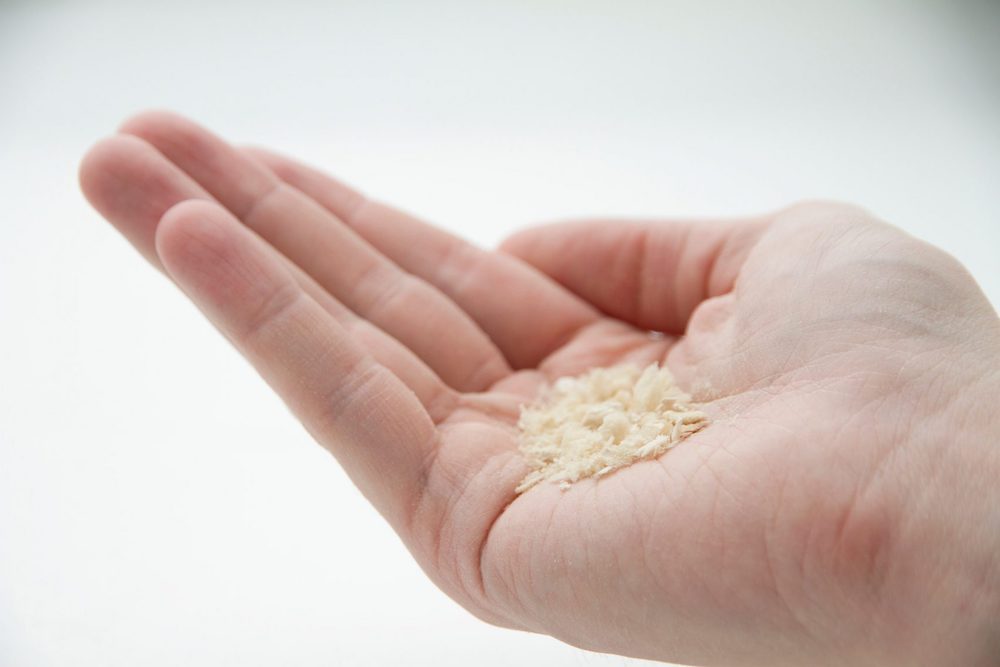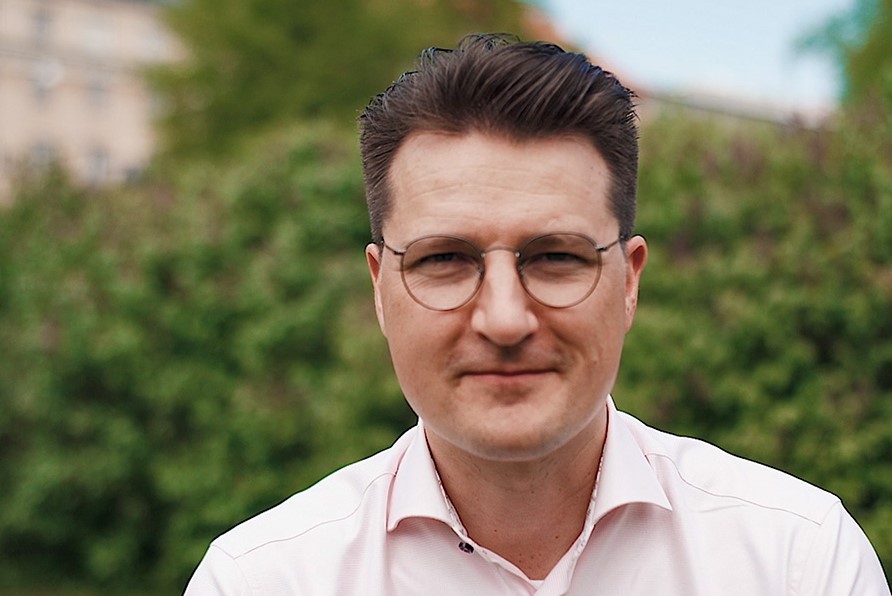Finland, a small, cold northern country, seems like an unlikely place to launch a global revolution. But this fall, a startup called Solar Foods will try just that when it opens its demonstration factory in Vantaa, outside Helsinki.
If Solar succeeds, agriculture as we have known it since prehistory could eventually shrink into a niche industry. The social and economic systems farming has created since the pharaohs could also diminish, along with much of the energy consumption that has fuelled them. And just maybe enough of the planet could go back to wilderness to give us a fighting chance of surviving climate change.
But for all that to happen, billions of people would have to eat what Solar Foods aims to serve up — a new, organic protein the company calls Solein.
According to a recent Finnish article, Solar Foods is a spinoff from earlier research into creating synthetic oil. Instead, the process created a substance that was edible and high in protein.
What’s more, the protein could be grown in a “bioreactor” using nothing but CO2, electricity, water, nutrients like nitrogen, calcium, phosphorus and potassium — and a few bacteria. Together, they would ferment like yeast in bread dough or beer, and the result would be Solein — a tasteless white powder that looks like flour and can be flavoured and added to food.
The company says a 40-litre bioreactor could produce enough protein daily to support a crew of six astronauts — and by implication, a family of six.
Solar Foods has so far attracted the equivalent of $51 million in support, most recently nearly $15 million from the Finnish Climate Fund. The demonstration facility will show how well Solein can be produced in economically serious quantities.
If all works out, consider these implications.
The Solar Foods blog points out how much water it takes to produce one kilo of beef protein: 130,610 litres. And that kilo of protein from dairy cattle requires 450,440 litres. For one kilo of Solein: 1,490 litres.
An interactive world map on the site shows how much of the world could be dedicated to Solein production. It’s a lot, including most of the Sahara and sub-Saharan Africa, where water is growing scarce and competition for it is often violent between pastoralists and farmers. Solein would need only a fraction of that water.
Even Canada could benefit. Solar Foods aims to produce a ton of Solein for $7,408. That’s $7.40 per kilo. Solar Foods CEO Pasi Vainikka told The Tyee that humans need about 60 grams of protein per day. So a ton of protein grown in Churchill or Bella Bella could help feed 16,000 people at a daily cost of 44 cents per person.
Let’s assume that Solein passes all the tests and starts appearing in markets in various inexpensive and tasty forms — enriched pastas and breads, meatless burgers and hot dogs, maybe even “fish” and chips. It could even turn up as fairly nutritious junk food.
Some consumers would avoid Solein because it lacks snob appeal. But if the fast food industry and Costco show us anything, it’s that cheap food reigns supreme. As costs rise for energy-intensive production of beef and pork and seafood, those foods might become luxury items consumed only now and again by people grown accustomed to having Solein on their plates.
The planet would benefit, and by extension so would the fate of humanity. The Solar Foods world map says: “Livestock feed consumes 46 per cent of the world’s harvest.… Livestock is taking up 40 per cent of the land we live in. Although generating only 20 per cent of the calories we eat, livestock and meat production take an enormous toll on our planet's land use.”
Right, but weren’t soybeans going to replace meat? Well, it’s clear we need a replacement for soybeans, too. Soybean production has doubled in production just since the year 2000. The U.S. and Brazil account for more than two-thirds of that production, and much of the deforestation of the Brazilian Amazon has been to clear land for soybeans to feed the beef cattle Brazil exports to the rest of the world. Humans consume only about a fifth of world soy production, in the form of vegetable oil, margarine, tofu and soy milk. But 77 per cent is just feed for cattle, pigs and poultry — an elaborate way to deliver protein to human mouths, and CO2 to the atmosphere, while deforesting the land and poisoning the water in the process.
The U.S. now dedicates more farmland to soybean production than to corn or wheat. Half of that production is exported to China, the European Union, Japan, Mexico and Taiwan, to sustain their own livestock industries.
It’s early days for Solar Foods’ attempt to reinvent protein for mass consumption. But playing out the scenario the firm is chasing is a fascinating thought experiment.
What happens when the global market for soy collapses — when you can even cook up a great mapo tofu with Sichuan spices and Finnish tofu made of Solein? What happens to the Brazilian cattlemen who routinely kill environmental activists objecting to deforestation?
What happens to the American farmers and ranchers who now thrive on government subsidies, but who won’t have a market for their soybeans or their beef? What will happen to the feedlot operators, and the meat processors, and the pesticide producers, and the immigrants who now slaughter animals for our cheap hamburgers and Christmas turkeys?
Farmland wouldn’t all turn back into tallgrass prairie or forest. We’ll still need plenty of plant-based foods of all kinds, from grains to chiles. Even so, we’ll need far less land just to feed livestock, leaving land that can support insects, reptiles, birds and other species that make up the ecosystems that all economies are built on.
We could see new industries developing ways to texturize and flavour Solein and other staples. Even vegans still eat imitation meat; we could enjoy entirely new diets, based on “craft foods” that would be nothing like Kraft Dinners.
With millions of bioreactors triggering countless “food apps,” we could see a new industrial revolution — but one with far fewer emissions, and making far fewer demands on the land. Agriculture produced the modern state. And here we are today, in a progress trap of our own making, poised to destroy ourselves quickly with a nuclear war or slowly by climate disasters and pandemics.

Perhaps Solein is yet another progress trap, but what if we humans can think up a new chance to feed ourselves without killing the planet?
The huge stakes inherent in that question motivated The Tyee to reach out to Solar Foods CEO Pasi Vainikka, who explained what Solein is — and isn’t. Here is our discussion, lightly edited for length and clarity.
The Tyee: You describe Solein chiefly as a kind of supplement or nutritional enhancement of other food products. Could Solein serve as a “stand-alone” food like flour or milk and be used to make pasta, dairy products, bread and other baked goods?
Pasi Vainikka: The products having the highest amount of Solein and even consisting almost purely of Solein are meat alternatives (patties, chicken-like nuggets and different kinds of “Solein bites”), yogurt-like products, spreads and dressings. Solein is not a direct one-to-one replacement for gluten (wheat flour) but can provide a significant nutritional upgrade (vitamins B, A, iron, proteins) to products like bread, pasta, noodles, cereals and granola.
Is Solein an all-purpose protein, or would we need other kinds of protein for a balanced diet? If so, could other proteins be produced as Solein is?
Solein is a complete protein; nutritionally it has all that a protein should, or even can, have. However no balanced diet should rely on a single food item only. There may be new products, other Soleins, in the future. But it is not that easy, as all them would be new and subject to rigorous regulatory approval process. It takes time. They are good processes, but not very fast.
You say Solein can be “meat-like.” Can it be textured and flavoured to closely resemble beef or pork or fish?
Yes, and chicken. We need to work on fish.
Let’s assume Solein production can be scaled up to produce millions of meals. Could it also be scaled down, to provide basic nutrition for a household, or a village of 10 or 20 households? If so, what would be the cost of production for a household or village in, say, Central America or South Asia?
We are working on developing a unit for deep space missions. The spinoff form is an autonomous small-scale device. Too early to speak about price. If we can produce small-scale devices, we should be able to mass produce as well.
Solein requires a small fraction of the water and carbon emissions needed for beef and dairy cattle. Have you also considered the economic implications for farmers, livestock producers, food processors and distributors?
Well, using the U.S. as an example: “In 1870, almost 50 per cent of employed persons worked in agriculture and one farmworker could only supply five people with farm products. By 1980, just four per cent of the employed were in agriculture, and each one supplied food for nearly 70 others,” according to researchers. And today it is about 1.7 per cent of the employed working in agriculture. Has it been painful? Yes, for some. Would we like to return to the agricultural society? I do not think so.
I do not expect the current generation working in agriculture to lose their jobs quickly, but future growth in the animal-product side of the industry may be seriously questioned. Plant-based products we need anyway. It is not so black and white how the transition will go in the coming two or three decades.
It’s often been observed that ancient hunter-gatherers worked only part of the time, while agriculture demands endless work. Have you and your colleagues discussed the implications of billions of people released from such toil, able to feed their families and free to choose their work and cultural activities?
I believe it gives humankind the opportunity to reach new heights. In doing so, disconnecting the increasing use of natural resources from an increasing standard of living is key.
You have been directly engaged in this venture for years. What do you consider the least-understood aspect of Solar Foods enterprise by the wider public?
I see often a heading saying: “This company produces synthetic protein.” Quite the opposite. This is the most natural, organic food we might ever have during our lives. We merely let a natural microbe grow and flourish, which also happens to very nutritious, and that’s it. It is the most natural form of life, food and nourishment. Traditional it is not. ![]()
Read more: Food, Science + Tech, Environment

















Tyee Commenting Guidelines
Comments that violate guidelines risk being deleted, and violations may result in a temporary or permanent user ban. Maintain the spirit of good conversation to stay in the discussion.
*Please note The Tyee is not a forum for spreading misinformation about COVID-19, denying its existence or minimizing its risk to public health.
Do:
Do not: